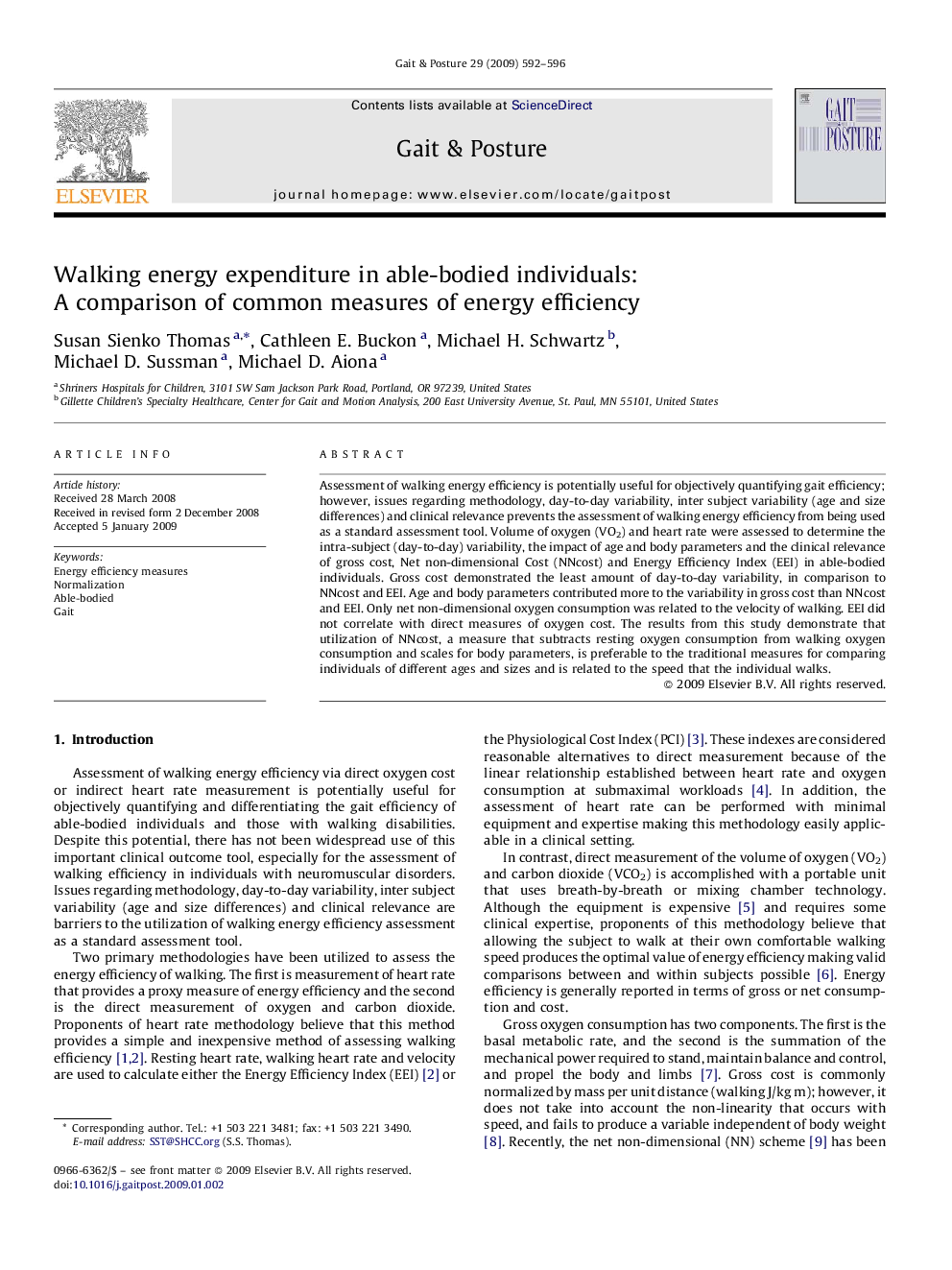| Article ID | Journal | Published Year | Pages | File Type |
|---|---|---|---|---|
| 4057332 | Gait & Posture | 2009 | 5 Pages |
Assessment of walking energy efficiency is potentially useful for objectively quantifying gait efficiency; however, issues regarding methodology, day-to-day variability, inter subject variability (age and size differences) and clinical relevance prevents the assessment of walking energy efficiency from being used as a standard assessment tool. Volume of oxygen (VO2) and heart rate were assessed to determine the intra-subject (day-to-day) variability, the impact of age and body parameters and the clinical relevance of gross cost, Net non-dimensional Cost (NNcost) and Energy Efficiency Index (EEI) in able-bodied individuals. Gross cost demonstrated the least amount of day-to-day variability, in comparison to NNcost and EEI. Age and body parameters contributed more to the variability in gross cost than NNcost and EEI. Only net non-dimensional oxygen consumption was related to the velocity of walking. EEI did not correlate with direct measures of oxygen cost. The results from this study demonstrate that utilization of NNcost, a measure that subtracts resting oxygen consumption from walking oxygen consumption and scales for body parameters, is preferable to the traditional measures for comparing individuals of different ages and sizes and is related to the speed that the individual walks.
